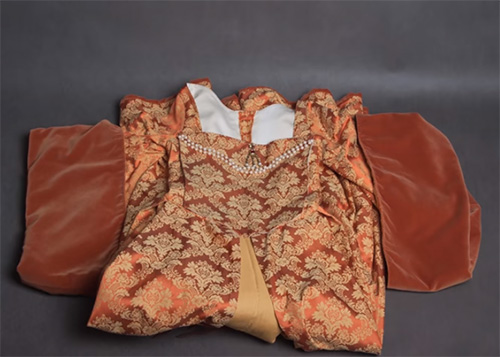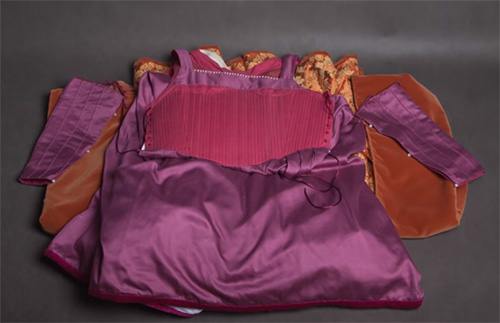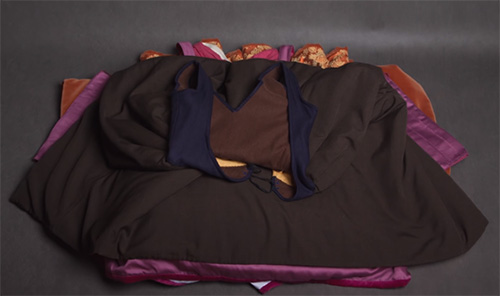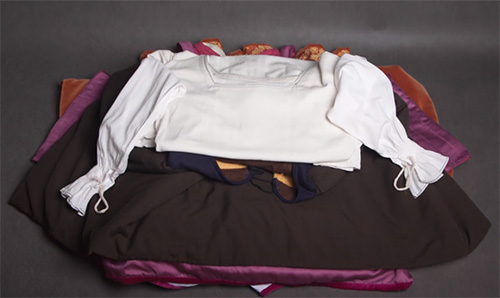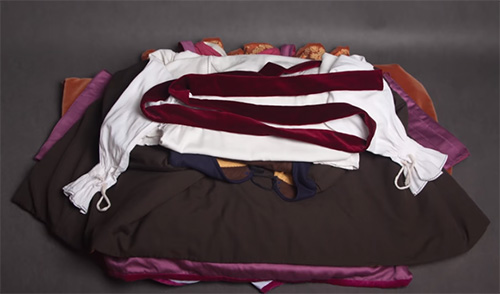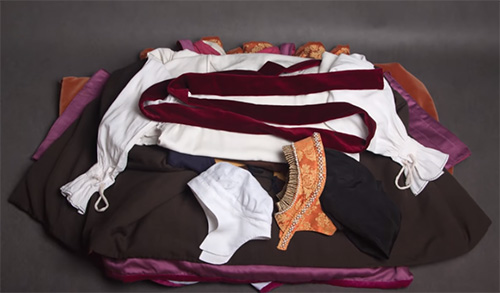 The Tudor era in England is a period between 1485 and 1603 when the dynasty of the House of Tudor reigned in the country. It was a time of elegant female dresses of triangular shape and odd male cube-shaped silhouette. The 1530s and 1540s are also characterized by a great influence of a French fashion on the English court attire. That’s when a so-called French gown and French hood appeared in England. And today, we’d like to show you a modern reconstruction of a French gown in all its beautiful detail.
The Tudor era in England is a period between 1485 and 1603 when the dynasty of the House of Tudor reigned in the country. It was a time of elegant female dresses of triangular shape and odd male cube-shaped silhouette. The 1530s and 1540s are also characterized by a great influence of a French fashion on the English court attire. That’s when a so-called French gown and French hood appeared in England. And today, we’d like to show you a modern reconstruction of a French gown in all its beautiful detail.
The costume was made by Natalya Skornyakova. Here's her YouTube channel:
Such court dresses were used by upper-class women in the period of Henry VIII (1509-1547). It is said that this style was brought to England by Anne Boleyn, the Queen of England (1533-36) and second wife of Henry VIII.

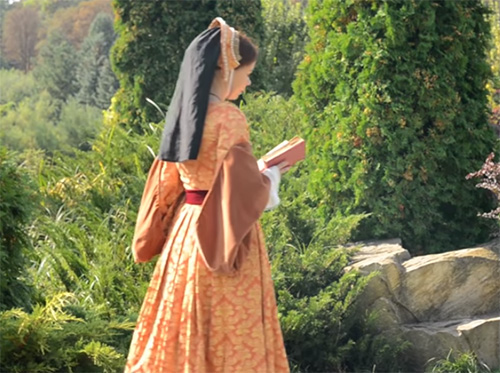
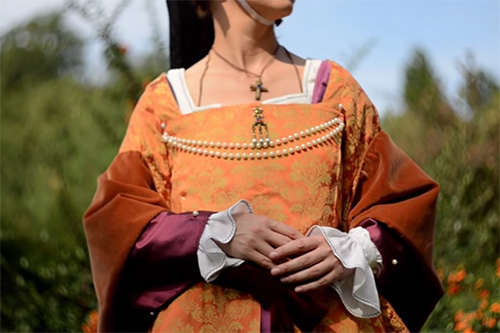
Short historical note
In 1514, Mary Tudor (sister of Henry VIII) married 52-year-old Louis XII, King of France. Mary moved to Paris together with her ladies-in-waiting, including Anne Boleyn. Less than 3 months later, the king died. Mary came back to England and Anne stayed in France with a new queen for the whole 7 years.
When she came back to England in 1520s, the fashionable headdress used by the local ladies at the Court was a so-called gable or English hood. By the shape, this headwear reminds of a gable of a house. It also has a veil at the back.
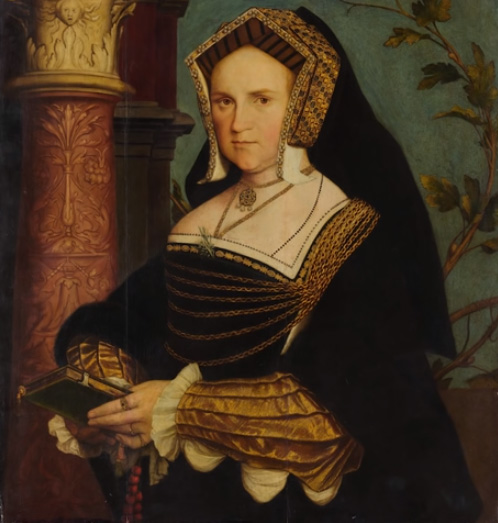
Hans Holbein, Portrait of Lady Mary Guildford (wearing a gable), The Metropolitan Museum of Art, New York
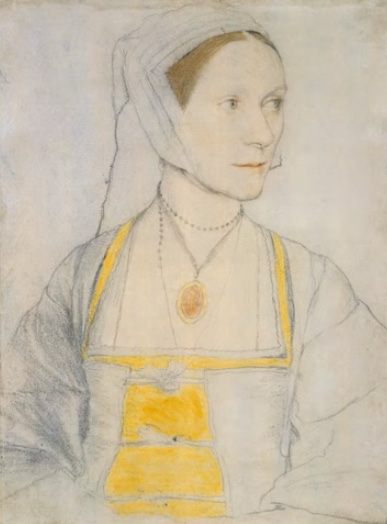
Hans Holbein, sketch of Cecily Heron, 1527
Anne Boleyn wore a French gown – clothing that was fashionable in France at the time. And her unusual headdress got a name “French hood”. It has some similar features with the gable but the shape is different. The French hood has a rounded shape; it is worn over a coif and a black veil is attached to the hood at the back.
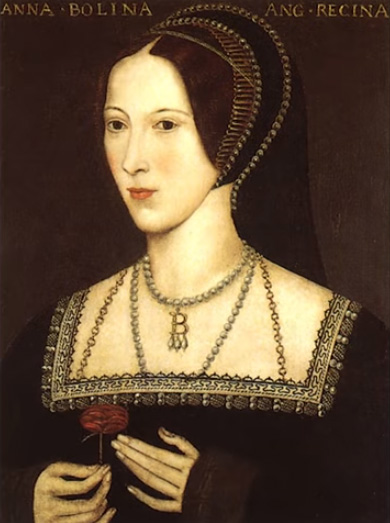
Possible Anne Boleyn portrait. National Portrait Gallery, London
Later, Anne got involved in rather complicated relationships and married Henry VIII, which led to her beheading. But this is a totally different story.
So, let’s go back to our Tudor dress.
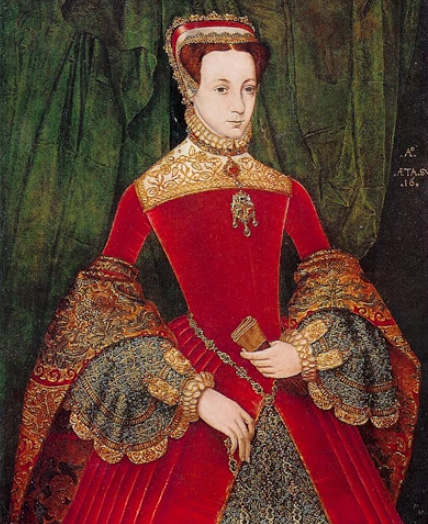
Hans Eworth, Portrait of a woman, previously identified as Mary Fitzalan, Duchess of Norfolk, 1565
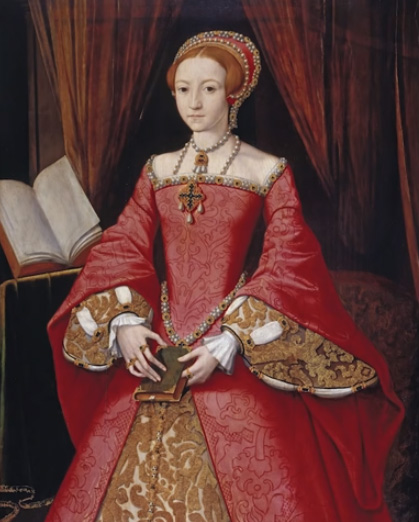
Portrait of Lady Elizabeth, 1546, Windsor Castle
Tudor gown design
The dress is laced at the front, and the lacing is covered with a stomacher which is attached by many pins. And, actually, the outfit that includes a dozen or two of pins is not the most comfy one. And a Tudor-era female attire is kept together mainly by lacing and pins.
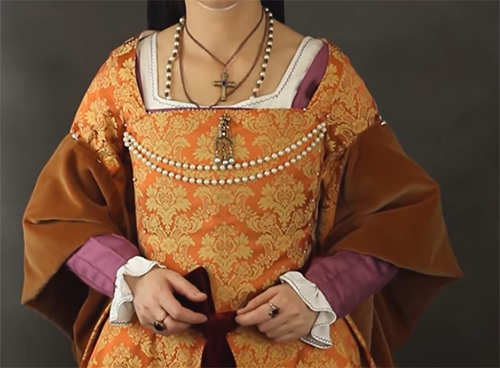
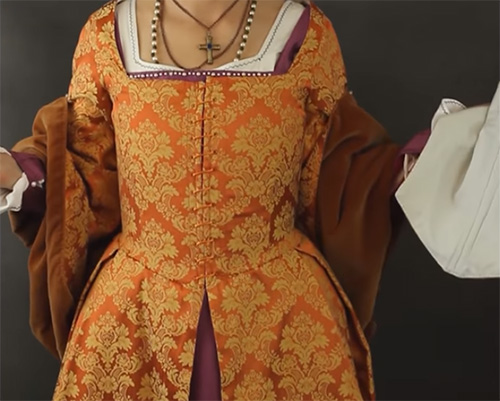
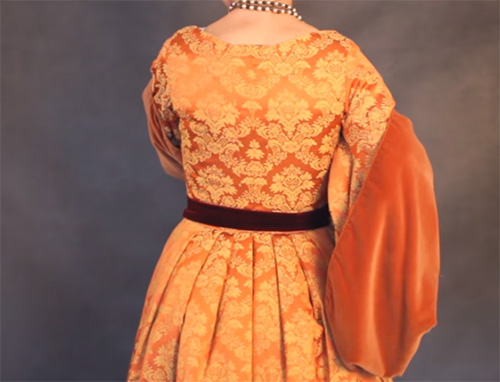
The gown has detachable sleeves that are laced to it. They can be easily taken off and washed or changed to make the outfit look different or women could get rid of them altogether in summer.
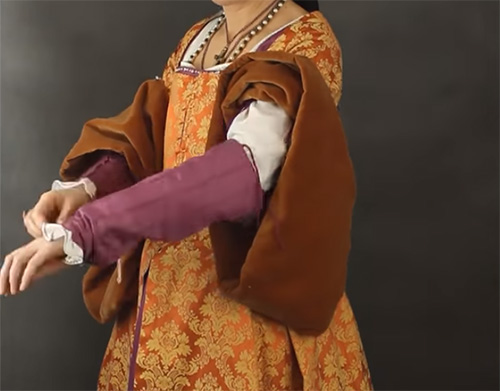
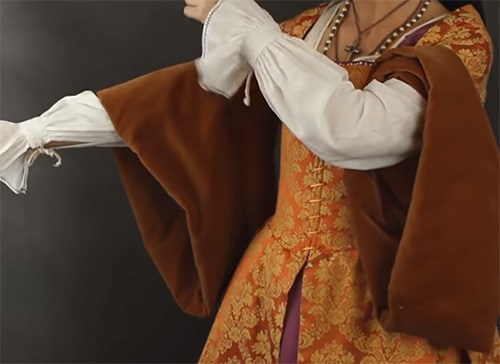
If we unroll the lapel of a sleeve, we’re able to see a nice shape of the Tudor sleeves.
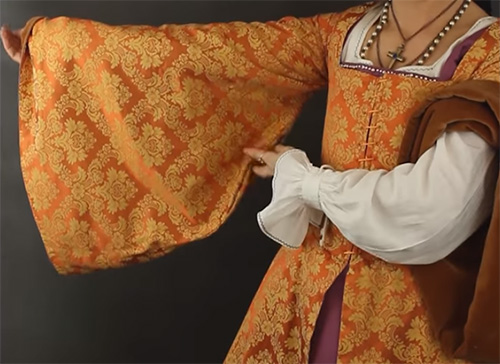
But the most interesting thing in any vintage dress is, how to obtain the silhouette? Because the shape and silhouette of women’s gowns in the 15th-19th centuries changed dramatically all the time. To answer this question, let’s take a closer look at the underpinnings.
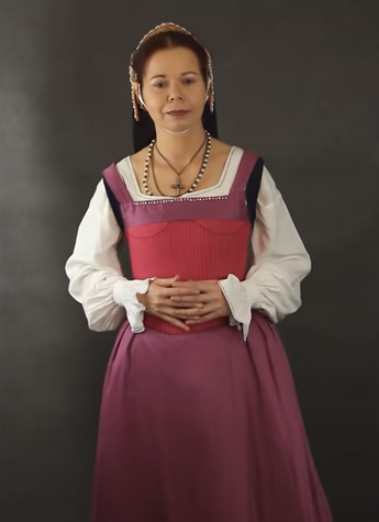
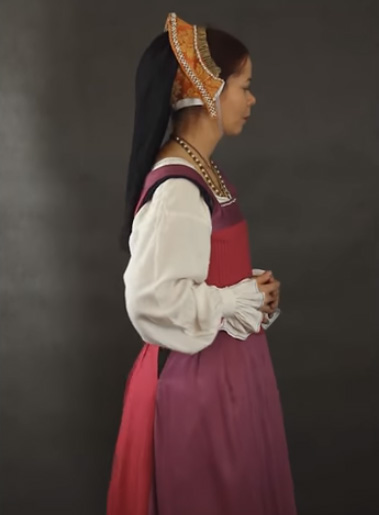
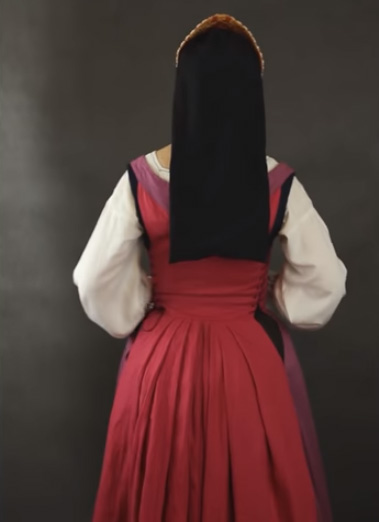
Under the gown, the next layer is a kirtle. In the 16th century, it is a one-piece garment that serves as a slip. It is worn over a chemise and its upper part is used as a precursor of a corset. In the 1530s, the flat silhouette was fashionable – females weren’t allowed to show their curves, breasts in particular. The stiff bodice was used by English court ladies in the 1520s too, but the rigidity was achieved by stiffened fabric. And by the 1540s, women began to use boned bodices. And the whalebone corsets appeared a few decades later.
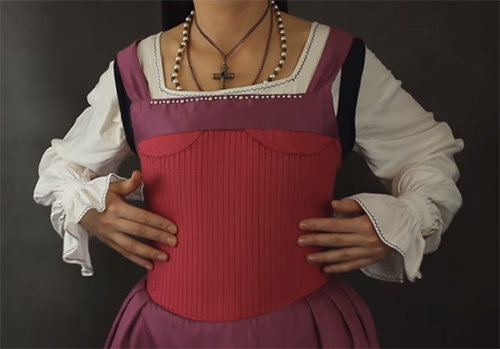

In the kirtle, the inserts of cheap fabric were used – in those places hidden by the upper layers of clothing. Actually, it was a popular way of saving money during many centuries. Even the royals did it. We find proof in some of the royal garments that survived to this day.
The bottom of a kirtle is usually adorned with a velvet ribbon. And this is not just for good looks – it makes the skirt of a kirtle lie more even and smooth.
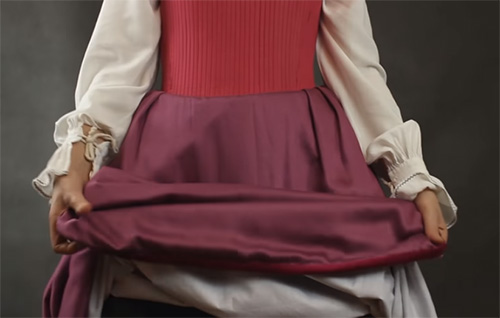
The next layer of a Tudor female costume is a quilted petticoat. It also helps to obtain the fashionable silhouette of the time.
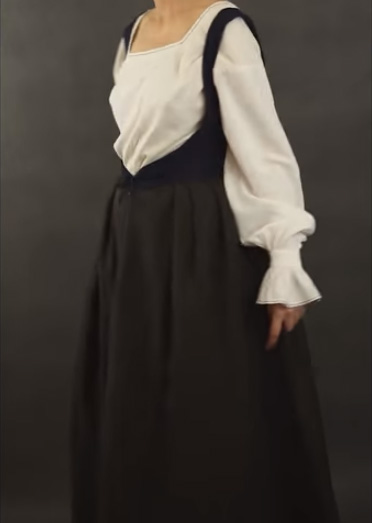
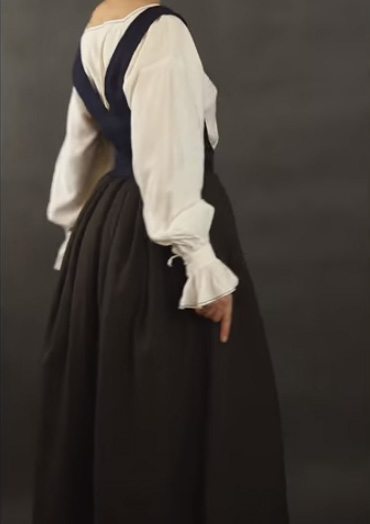
The last layer of underwear is a simple chemise. There were no drawers yet in England in the 16th century.

An important part of a Tudor French gown is a headdress – the French hood. We’ve already talked a little about it. It first appeared on Mary Tudor as a part of her wedding outfit when she married Charles Brandon, 1st Duke of Suffolk, in 1516. But English court ladies weren’t in a hurry to wear it, they preferred a gable because it was considered to be a primordially English headwear. It was Anne Boleyn who made the French hood famous and widespread. It was associated with her long after her death. In fact, the next wife of Henry VIII even forbade her ladies-in-waiting to wear the French hood. But still, the French gown and French hood were in use in England until the 1550s.
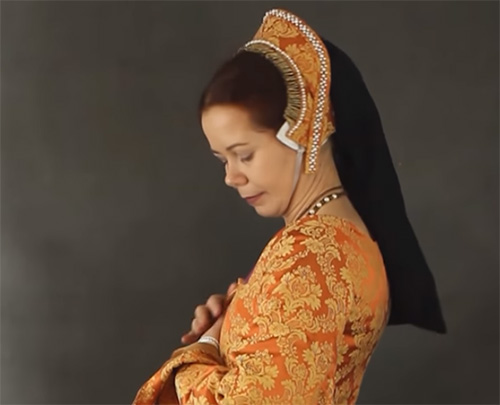
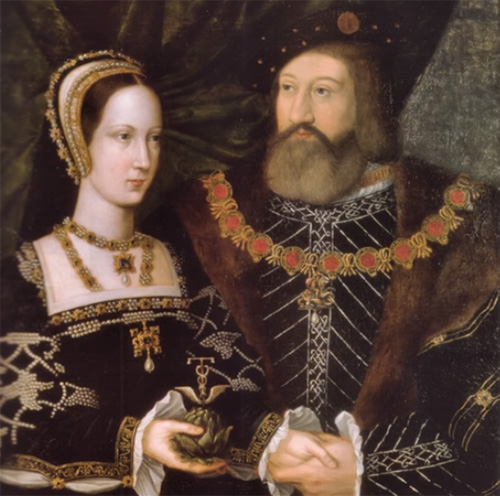
Jan Gossart, Princess Mary Tudor and Charles Brandon, duke of Suffolk, 1516
And one of the most bizarre Tudor clothing articles is the shoes. These are an item of a German fashion of the time. They are called “Cow mouth” shoes or “duckbill” shoes or “bearpaw” shoes. And they have a very unusual shape.
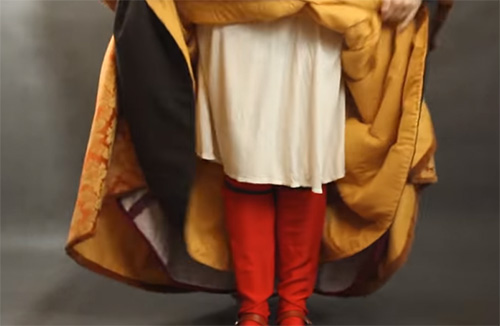
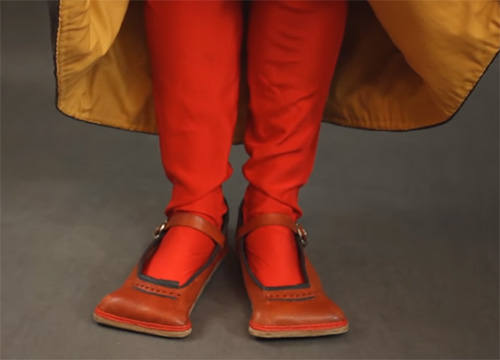
Of course, the shoes were worn on top of hose or stockings tied with garters under the knee. The garters usually were made from leather and had buckles.
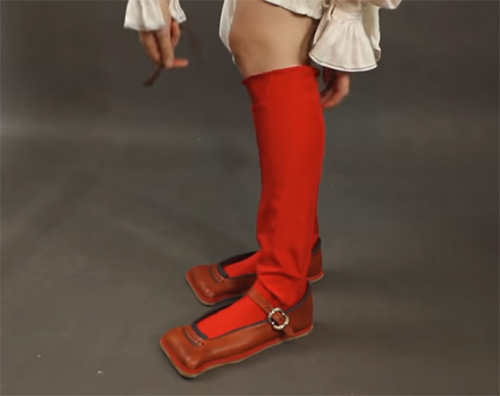
It takes about 15 minutes to put on this full Tudor-era attire. At least, when there is a maid who helps to lace the kirtle. And all the upper-class women in the 1500s had maids.
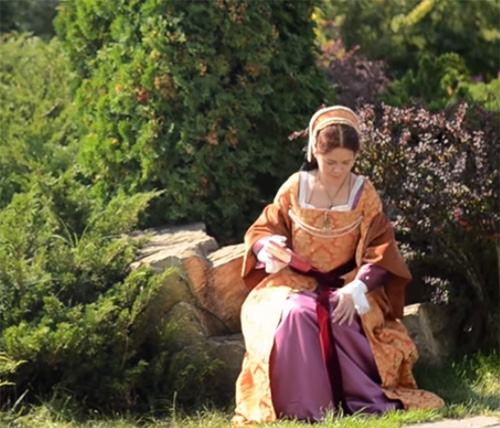
The whole Tudor women’s outfit may consist of 8 layers of fabric and weigh about 5 kg (11 lbs). For a modern lifestyle, it would be too much, too hot. But in the 1500s, people lived in stone dwellings without central heating, so their clothes were meant to keep them warm.
Items of a Tudor dress

